The transitions of daily life and the body, communicated through sensory experience, and their phases,
Interviewer: Hyeongbin Cho (dance critic)
Interviewee: Sung Hoon Kim (choreographer)

Seoul Performing Arts Festival (SPAF) 2023, Korea's leading international performing arts festival, has concluded after a month-long journey. Now in its 23rd year, the festival presented 19 shows to fulfill its new vision and mission of being "an international performing arts festival that captures the contemporary perspectives and values of the times.
In this edition of TheApro, we met with choreographer Kim Sung Hoon, one of the international artists who highlighted the Seoul Performing Arts Festival. He has been perfecting his own dance language by staging human movement and using black comedy to create humanistic works.
Dance by and for humans, choreographer Kim Sung Hoon
Hyeongbin Cho: Hello, nice to meet you, choreographer Kim Sung Hoon. You performed a work entitled "Zodong" at this year's Seoul International Performing Arts Festival. Today we are going to talk about it. First of all, could you tell us a little bit about yourself and what you have been doing?
Sung Hoon Kim: Hello, I am Kim Sung Hoon, a contemporary dancer. I choreograph in various fields such as opera, Korean dance, and ballet, regardless of the genre. I have been actively working as a dancer, and now I am working as a dancer and choreographer. My recent works include 2019's "Pool" about the marginalized people who are tied to society, "Mind seeker" about the uncountable unconscious, and this year's "Grimento" about bullying in schools.
Hyeongbin Cho: You seem to deal with a variety of social issues in your work. You presented "Jodong" at SPAF, and this was the second time you performed the work. What is the meaning of the title of this work?
Sung Hoon Kim: I performed the piece in January 2022, and now I am performing it again about a year and a half later. The word 'jodong' has many different meanings. It can mean 'hasty movement' or 'early winter. The word can be read in different Chinese characters, which gives us a variety of meanings. So I made it so that it can encompass many different meanings.
I have talked about many of my works before, but I do not often tell my personal story in my works. But I put a lot of my story into this one. I was working frantically, and the process of changing myself in this situation seemed to overlap with modern people running towards their goals. I wanted to talk about the situation where I became a monster instead of a human being while running towards my goals. At the same time, I wanted to create a sympathetic opportunity for the audience to look at themselves again.
Hyeongbin Cho: There are a lot of dancers in this work and there is a lot of detail in the individual scenes, in the movement and in the costumes. Was there anything in particular that you wanted to do differently for this work?
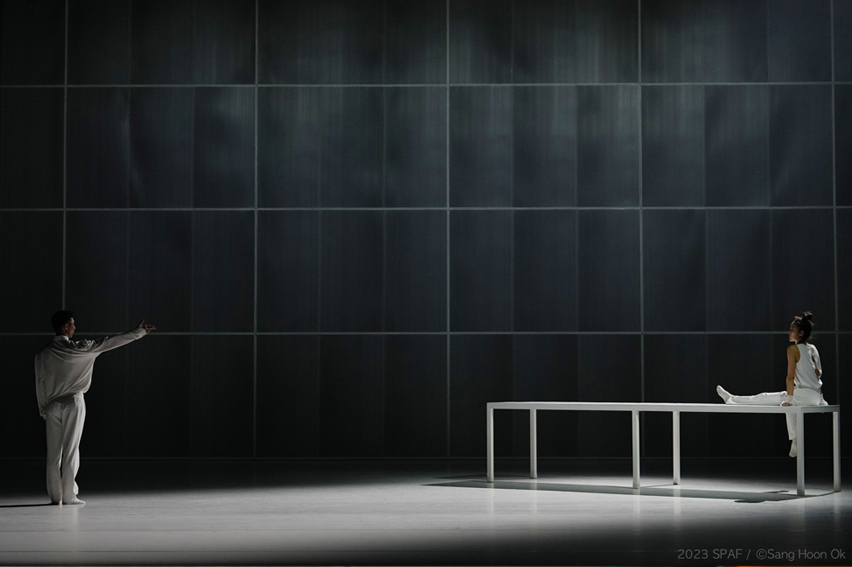
Sung Hoon Kim: I had a strong image of a white field covered with snow in my mind since I started this work. So you have to look closely to see it, but there are shadows made of branches in every group dancing move. There are actually a lot of branches in Jodong, more than 100. It is almost impossible to do it alone, so there are a lot of details. I think you have to watch it more than once to see those details. People who saw the work a second time during the reperformance said that they were glad to see the details that they could not see the first time.
As for the message of the work, I think it was very much influenced by the COVID-19 pandemic. Looking back at how I lived when I was isolated and had to be alone because of the virus, I was reminded of my daily life, which was really busy. That feeling was the starting point, which was actually a common feeling for everyone at that time. So I tried to point out the things that I noticed then and the things that have changed and the things that are repeated as we return to our pre-pandemic daily lives after the pandemic and express them in the work.
The "we" story in black and white,
Hyeongbin Cho: Let us talk a little bit about what we see in the piece. Because as you said, it seems to be dominated by a lot of strong color contrasts. What were you trying to bring out by using these strong contrasting colors?
Sung Hoon Kim: Personally, I love the white and black combination. I had tried it before in other works, but it did not work as well as I had intended. So when I was preparing for Jodong, I remembered that, and I thought I could do it a little more skillfully now, using what I had learned. One of the important images in Jodong is the loneliness of winter, and I thought white was the best way to express that. I also wanted to give it a black-and-white movie feel to put some of the old things in context. I also wanted to play with the sophistication that black and white has, and I think it was a combination of all those things.
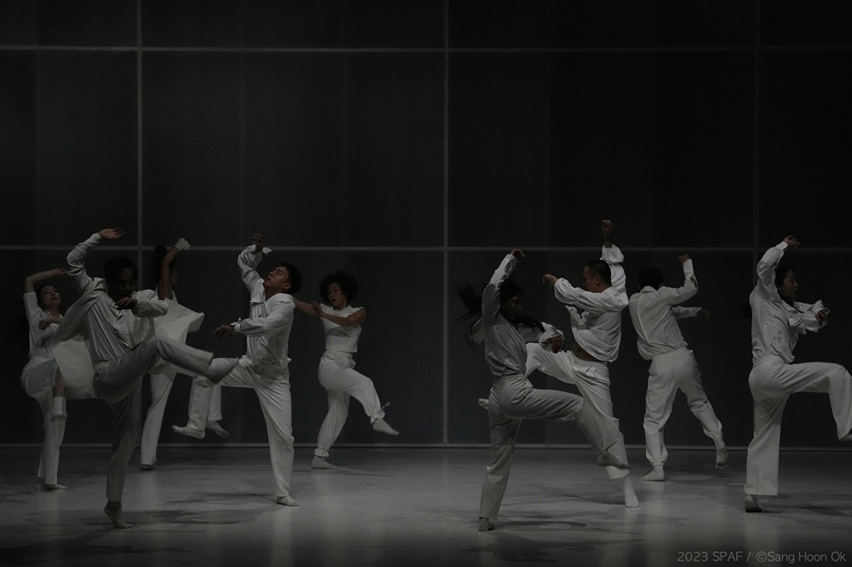
In the first scene, the dancers are blurry in the dark lighting, and I wanted it to look like a dream. I call that part 'the nightmare' and I wanted every movement in that part to have meaning. A lot of my movements there are different from what I am used to. Then later, when they come out in all black, I wanted to represent our everyday life. I took gestures from our everyday life and made them contemporary, and I chose to put a gag in my mouth as a projection of myself, recognizing that I am in a difficult situation, but still persevering through it. For the part where the dancer is soloing in a room, I wanted to express the pain of watching myself change in the room. I expressed the strangeness of my body movements step by step, and I think that becoming a monster in time with the music created empathy.
Hyeongbin Cho: At the end of the solo and group scene, a black circle flows from the one remaining dancer on stage and eventually covers the stage. It was quite impressive. I am sure it was not easy to set up.
Sung Hoon Kim: I wanted the moment when the lone dancer finds himself running like a cog, but is exhausted, to be a kind of shock as the black cloud covers him. It is a short scene using video, but it took six hours to put together. You have to adjust the size of the video and the music so that the black circle covers the whole stage at the end. It is a very painstaking process. In this scene, I wanted to share the emptiness with the audience through sound and mise-en-scene, as a kind of experience. I wanted to create a process of deepening your thoughts and awakening your other senses through the darkness, and then at the end, when the dim light comes in, the illusion is broken and you are back to thinking about yourself.
The last part of the piece ends with the two dancers touching hands, like a mirror. I wanted the audience to imagine that they were looking at themselves and to share the feeling of looking at themselves in their own imagination, just as I looked at myself through the piece. I guess you could say it is a bit sad in a way.
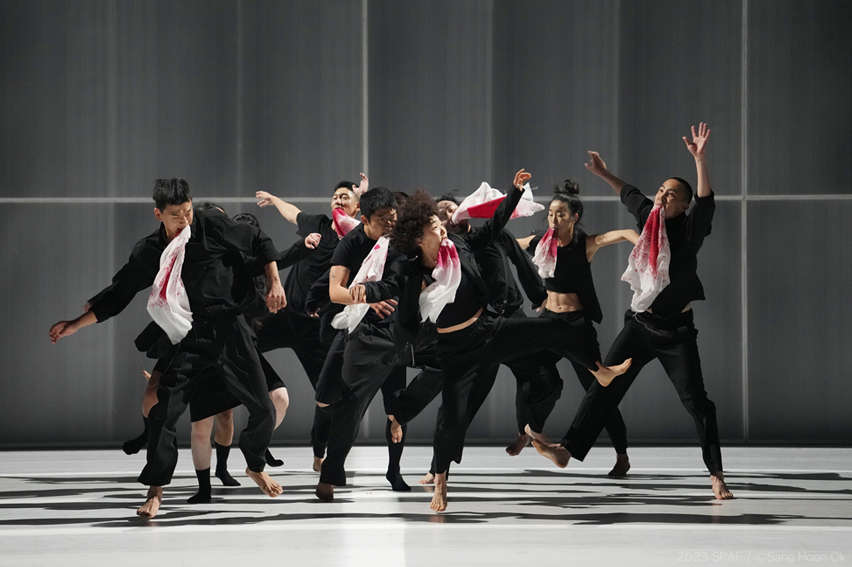
Hyeongbin Cho: There were definitely some impressive mise-en-scène, and a few scenes that stuck with me. I think the power of the messages conveyed through the senses definitely worked. Were there any challenges you faced while working on the piece, or areas where you were disappointed in yourself as a choreographer?
Sung Hoon Kim: I think there are always some regrets. I usually prefer to work in a simple way, but this work was much more complicated than I thought, so I struggled. But I am confident that I did my best. There may be some things that seem to be lacking to the audience, but I think I can take what I learned from this work and make it better in the next work. I think I could have tried more details if I had more time. But everyone who participated in the work put in a lot of effort and it made me realize that I need to become a more generous person and make a better work with richer thoughts.
That is also the message of this work, but I hope I can become a person who can look back and think instead of living in a hurry. I think that is the power of art, to be able to look back over time and change myself through it. I do not think that the performance will make any immediate changes, but I want to take this energy and carry it forward. I hope that there will be more times when I feel that the performance can change my life. I am grateful that this work has been a good opportunity for me.
Hyeongbin Cho: Thank you for taking the time to share your thoughts with us. I know you are working on a lot of different things right now and I cannot wait to see what you have in store for us. I take a lot of the interesting things you shared with us today to heart. And with that, I will end this interview. Thank you very much.
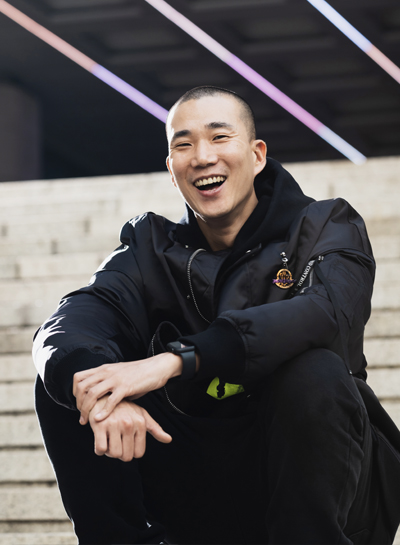 |
Kim Sung Hoon Kim Sung Hoon, a choreographer and dancer, has been active in Korea and abroad as a dancer with LDP (Korea) and Akram Khan Dance Company (UK). As a choreographer, he places the utmost importance on staging human movement rather than imposing his own movement. By respecting the unique movements of each dancer and researching the daily movements of ordinary people according to the theme, he has choreographed scenes that describe the senses by using the collage technique of the two phenomena to form a single image. |
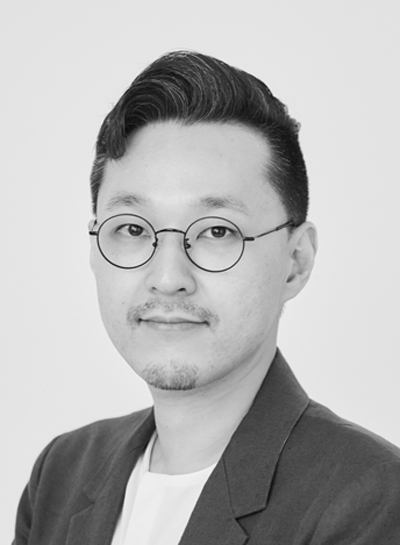 |
Hyeongbin Cho I view performances and write about them. After majoring in sociology and cultural studies, I worked as a reporter and editor for the dance monthly publication Body and web magazine Dance In to write and publish critiques of contemporary dance. I am interested in the moments of “political bodies” that connect the physical movements to society, in addition to discovering and interpreting the possibilities of the body. I work as an editor in chief of Editorial collective null. @hyeongbin_rd |








 PREV
PREV
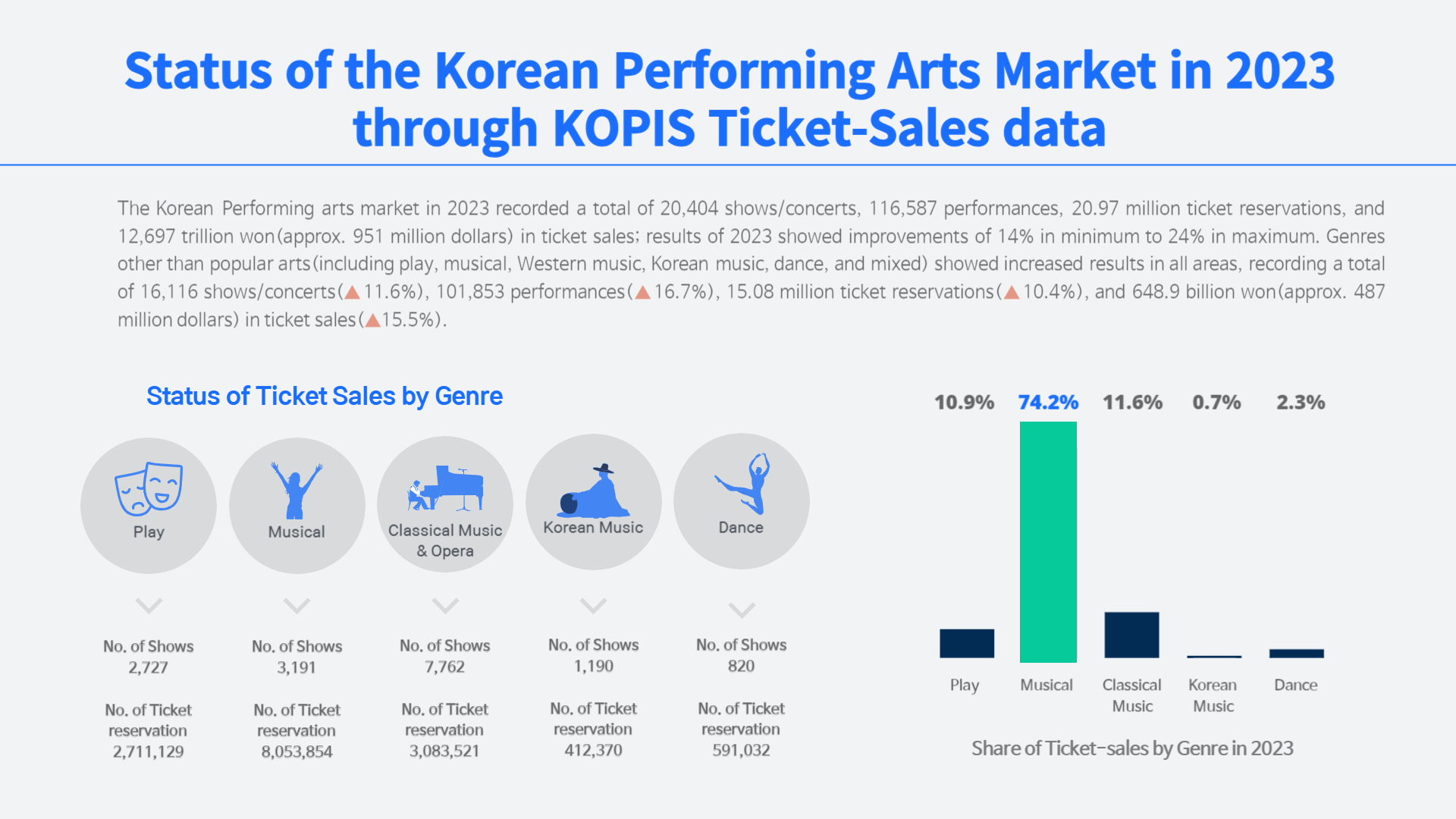
.jpg)
.jpg)
.jpg)
.jpg)











